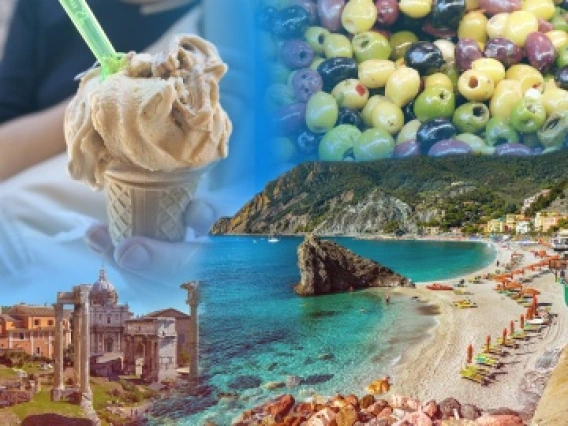
Using a new online platform, University of Arizona professors are transforming Italian classes to deliver language instruction combined with relevant, up-to-date cultural lessons that allow students to explore their own interests through hands-on projects.
The three-year project, funded by a $150,000 grant from the National Endowment for the Humanities, is led by faculty members Maria Letizia Bellocchio, Beppe Cavatorta and Borbi Gaspar.
“We would like to change the way in which we teach and students learn by creating something more interactive and more rooted in Italian culture. From the first basic language course, students will be integrating the Italian culture and language together,” said Bellocchio. “This is fantastic. For students, they are at the center of the learning process and they can discover different contemporary things in every class.”
Through the lens of cultural studies, the Italian in Wonderland project will focus on the theme of “socio-cultural realities,” embracing disciplines such as history, music, art, religion, literature, and environmental humanities with a variety of everyday cultural materials related to media and food studies, architecture, fashion and design, economy and law, sciences and technology.
Free for students, the Italian in Wonderland platform will replace traditional textbooks that treat language skills and cultural knowledge as separate subjects, without the context that’s relevant to real life. Also, textbooks are typically out of date and expensive for students.
“Having this kind of a platform is very important to have something that can continuously be updated because cultures change very fast. Having the possibility to change an activity or add new material in very little time is a big plus,” Cavatorta said. “When you create a textbook, it takes two years minimum to go into production and be implemented in schools. So when it comes out, it’s already outdated. With this, we are teaching students the reality at the moment, the culture in the moment. Every class is always up to date.”
“We are doing this for the students as an open resource, so we want the students to feel attracted to the platform. It’s visually amazing. There is no comparison with any textbook,” he said.
In all, the project will include six courses, four in basic and intermediate Italian language and two advanced courses, one redesign of a current class, ITAL 433 – Italian Business, and one entirely new class, Made in Italy. The language courses developed and implemented so far include eight modules, covering visual arts, design, mobility, environment, immigration, fashion, food and the world of work.
“The approach we have is to use language that is contextualized. By bringing in materials, like videos, texts and other authentic, relevant materials from the language, students get to know the cultural elements. We are representing the language and cultures as they are,” Gaspar said. “With activities, we provide a space for learners to explore for themselves some aspect of the culture. With each module, students themselves are researching which topics they want to study further. They become agents of their learning and they are in the center of the learning, while professors are taking the role of facilitators and supporters of the learning.”
While students have traditionally been drawn to the Italian program to learn about things like fashion and food, today’s generation is very occupied and worried about our environment and many social issues as well, Gaspar said.
The project initially started with a small College of Humanities grant and some funding support from the Department of French and Italian. But the NEH grant is a game changer, Bellocchio said.
“The three of us brought together different aspects of the Italian culture and we’re able to integrate these different knowledges in this platform,” said Bellocchio, herself an expert in Italian culture and media studies. Cavatorta specializes in literature and contemporary poetry, while Gaspar specializes in second language acquisition.
“In each module, we try to insert this relationship between the Italian context and students’ own context. That could be the United States, or elsewhere like India, Africa or China, because our students come from everywhere,” Bellocchio said. “All these activities are so involved because students are discovering things not just about Italy, but they see connections around the world.”
The project will also help create connections between students’ coursework and study abroad and internship opportunities in Italy. “Students are doing hands-on projects in every module, so when they go to study abroad, they are prepared,” she said.
Bellocchio said after teaching with the platform last semester, her first impression was the benefit of the flexible design, both for instructors and students.
“Students are very happy because they have immediate feedback when they do an exercise. They are excited to explore the Italian culture on their own or in small groups. In the previous courses, they were not used to speaking that much in class. This platform is meant to make them talk, especially at the beginning, in each class, and at the end of the semester, they were so excited because they become confident in speaking,” she said.
The online platform is designed to be flexible, able to be used for courses taught in person, fully online, or in a hybrid mode. The department is currently teaching hybrid courses, with students meeting twice a week in class and working on their own the other two days per week.
Once complete, the Italian in Wonderland platform can be made available elsewhere, putting the University of Arizona and College of Humanities at the forefront of Italian language instruction and serving as a model for more inclusive and accessible education.
“Our goal is to create something that makes the learning of Italian useful for the students’ future so they can be confident in a globalized, digitized world,” Bellocchio said.

